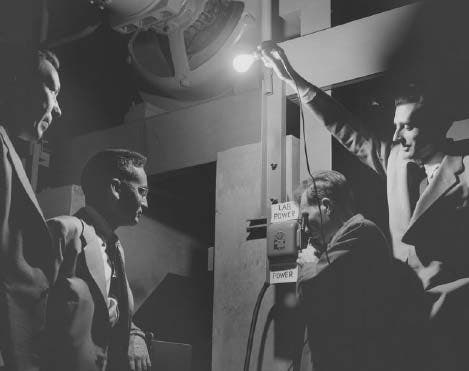
The Atomic Age
Atomic Timeline

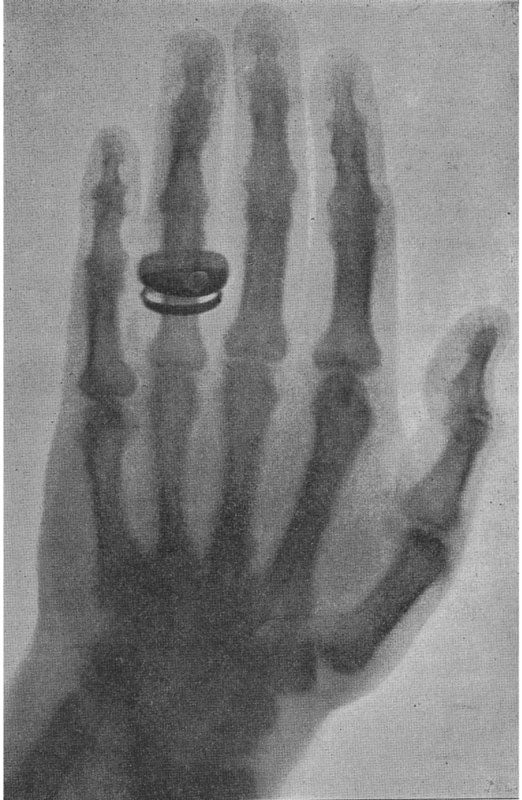
In rapid succession, scientists make a series of significant discoveries that transform physics into a new discipline.
Image source: Röntgen, Wilhelm Conrad. “Ueber eine neue Art von Strahlen.” Sitzungsberichte der Wurzburger Physikalisch-Medicinischen Gesellschaft. No. 1, Würzberg, 1895, pp. 13.
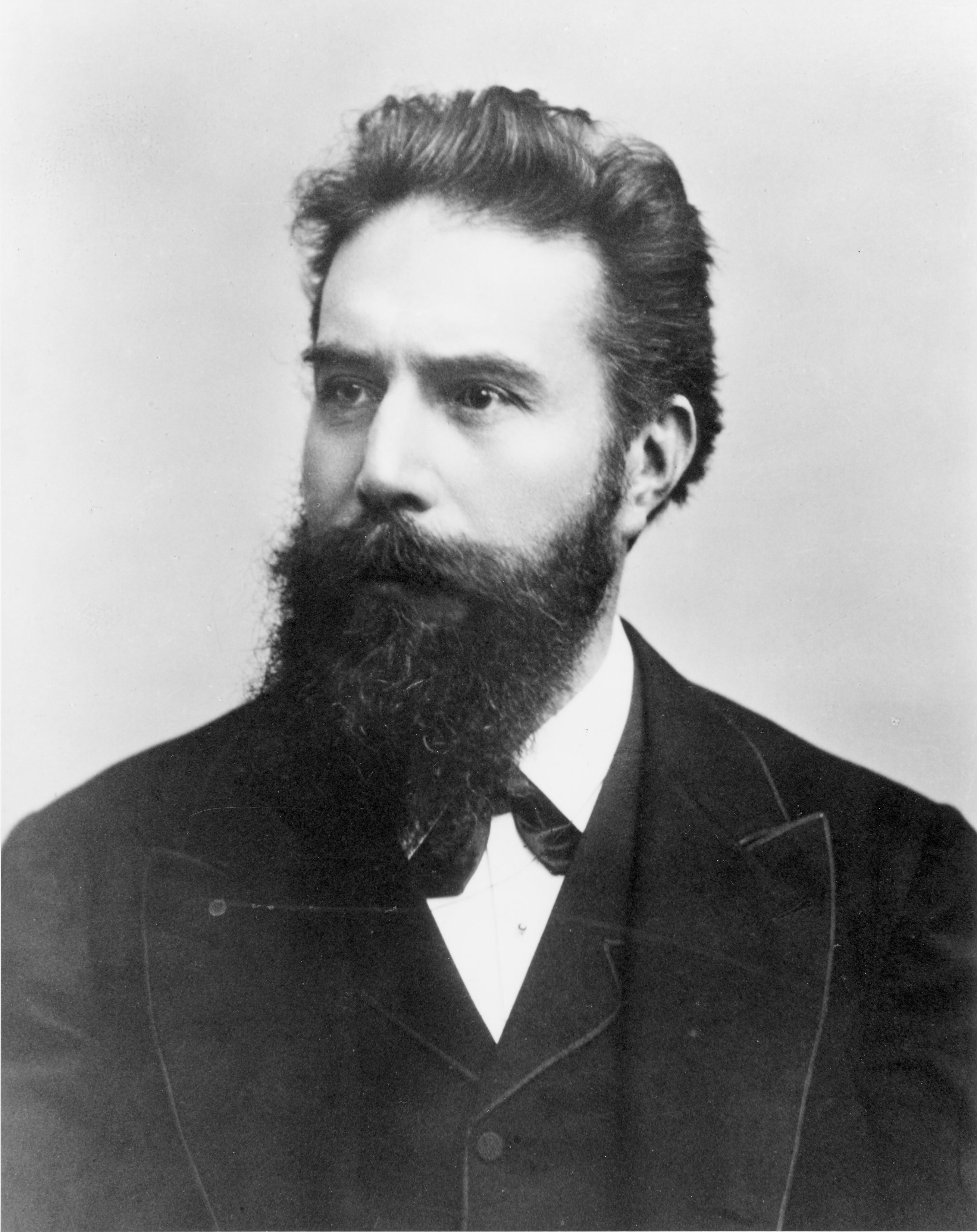
Wilhelm Röntgen, a physics professor at the University of Würzburg, published his discovery of x-rays in the Sitzungsberichte der Wurzburger Physikalisch-Medicinischen Gesellschaft, the Meeting Reports of the Wurzburg Physical-Medical Society. Röntgen named the rays “X” to indicate the unknown nature of the radiation. In 1901 Röntgen received the first Nobel Prize in physics for his discovery.
Image source: Aufnahme U. Verlag V. A. Baumann Nacht. Portrait of Wilhelm Rontgen. AIP Emilio Segrè Visual Archives, Lande Collection.
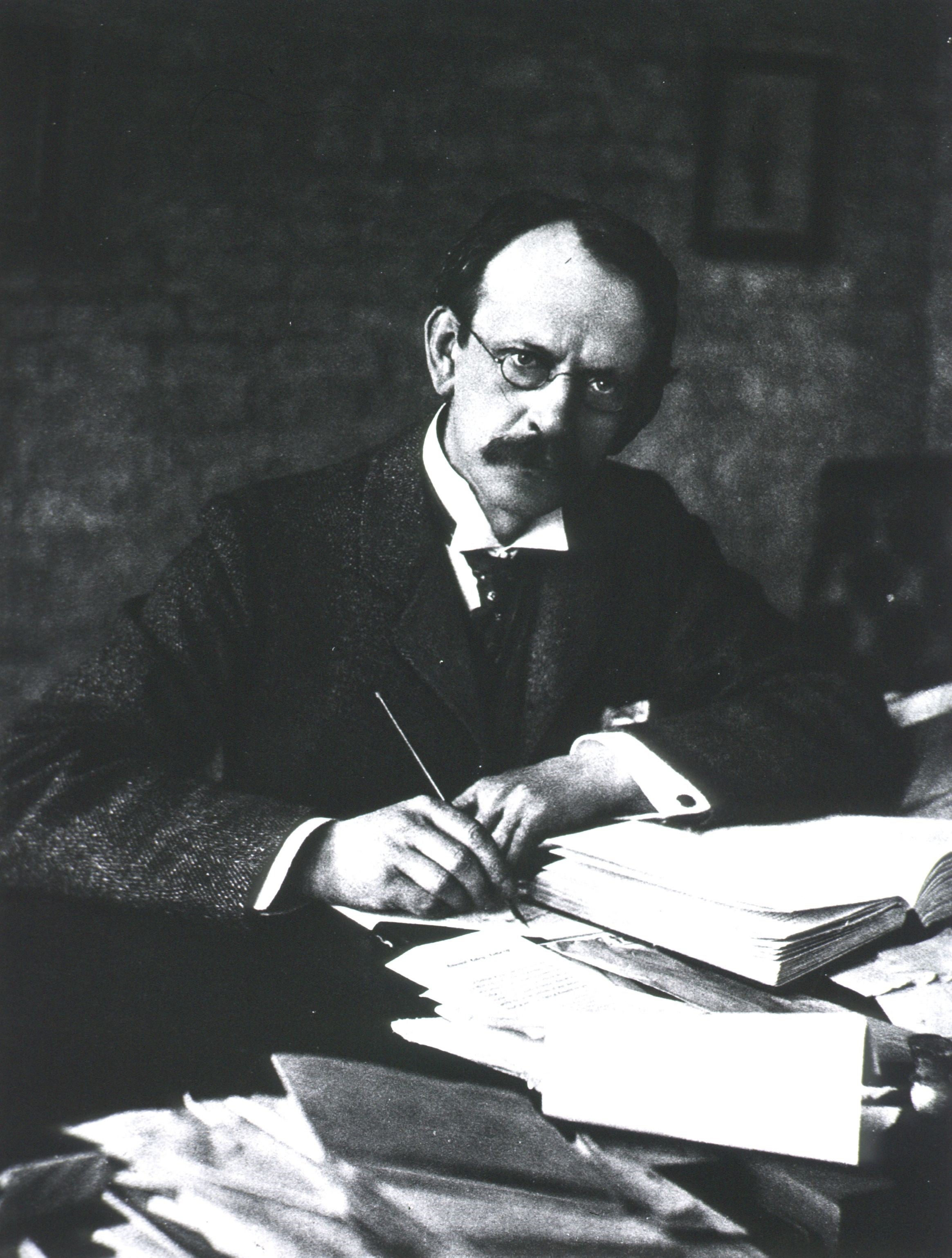
British physicist Joseph J. Thomson, the Cavendish Professor of Experimental Physics at the University of Cambridge, announced his discovery of the electron in the Royal Institution and a conclusion subsequently in Philosophical Magazine. He discovered the electron while researching cathode rays. He named the new particles “corpuscles.”
Image source: Sir Joseph J. Thomson. Images from the History of Medicine (IHM), National Library of Medicine.
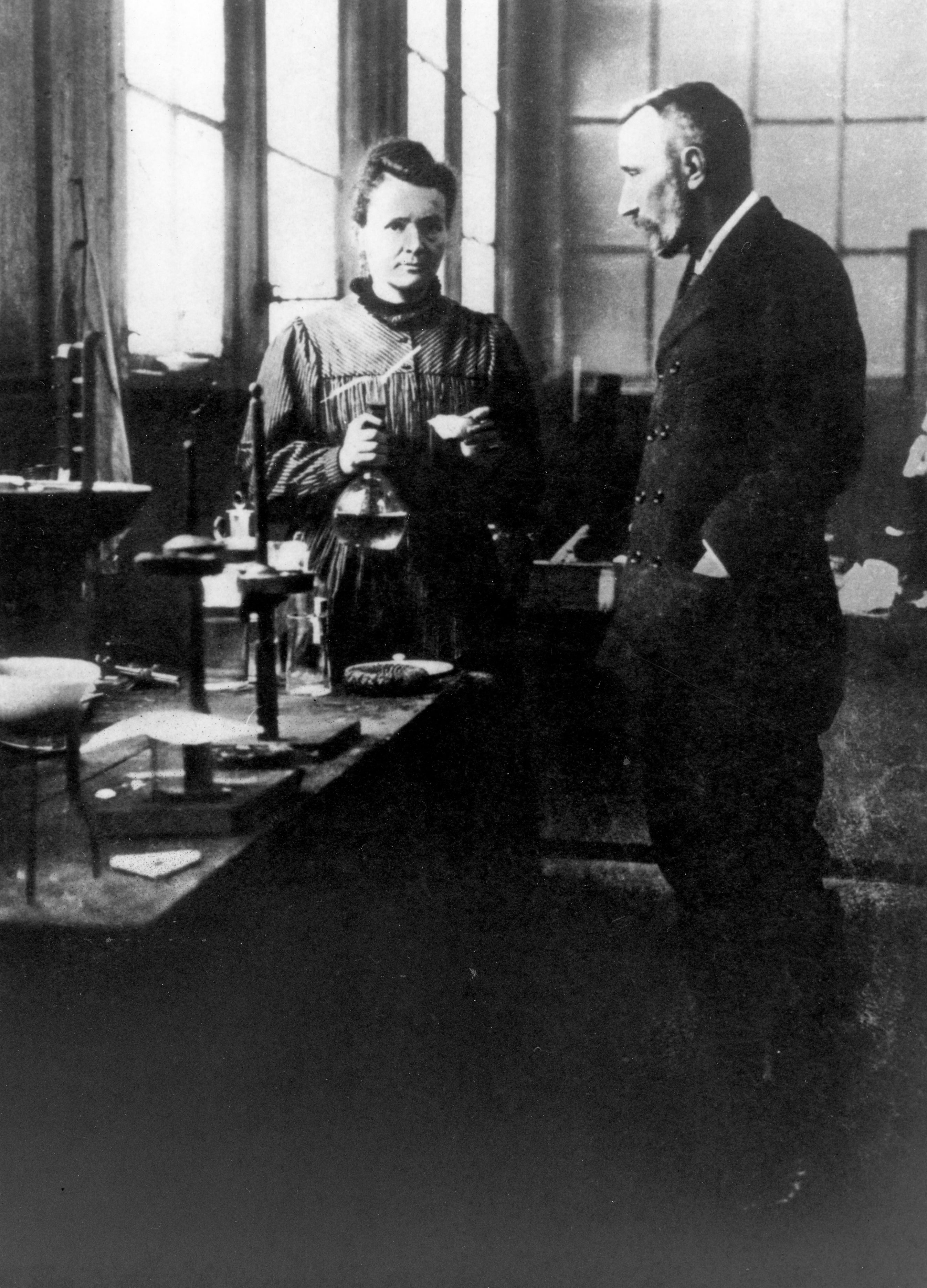
French scientists Marie Skłodowska and Pierre Curie published their discovery of radium in Comptes Rendus de l’Académie des Sciences. In the December issue of the same journal, the Curies announced their discovery of polonium, named after Marie’s homeland of Poland. The Curies shared the 1903 Nobel Prize in physics with Antoine Henri Becquerel.
Image source: Marie and Pierre Curie Converse. 1896, AIP Emilio Segrè Visual Archives, Physics Today Collection.
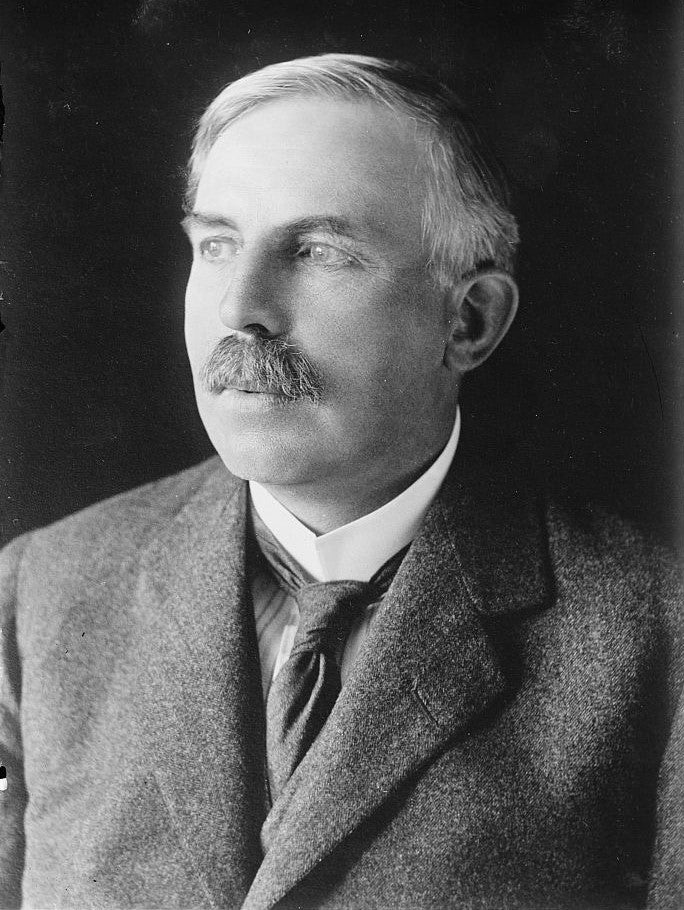
Ernest Rutherford and Frederick Soddy published their theory of radioactive decay in the Philosophical Magazine. They discovered that radioactive material decayed according to an exponential law and created the concept of half-life. Rutherford and Soddy also proved that atoms of one radioactive element would spontaneously turn into another, by expelling a piece of the atom at high velocity.
Image source: Bain News Service, Publisher. Sir Ernest Rutherford. George Grantham Bain Collection, Library of Congress Prints and Photographs Division.
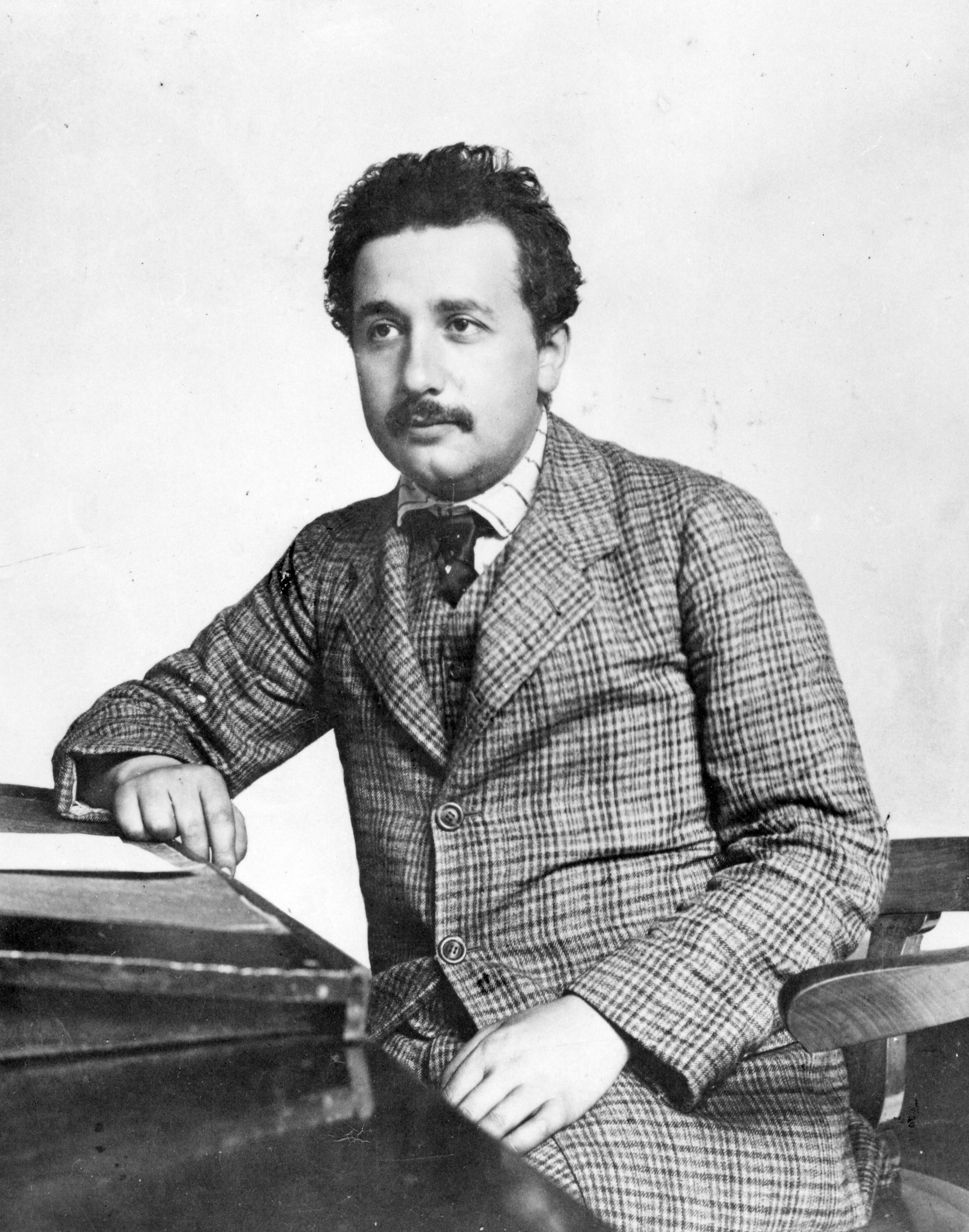
Twenty-six year old German scientist Albert Einstein, working at the patent office in Bern, Switzerland, published his special theory of relativity that implies convertibility of matter and energy in Annalen der Physik. In the same year, Einstein published papers on a new method of counting and determining the size of the atoms, and on the phenomenon of Brownian motion that proved that atoms actually exist. Historians have named Einstein’s prolific scientific output of 1905 as his annus mirabilis, his miracle year.
Image source: Einstein Portrait. Hebrew University of Jerusalem Albert Einstein Archives, AIP Emilio Segrè Visual Archives General Collection.
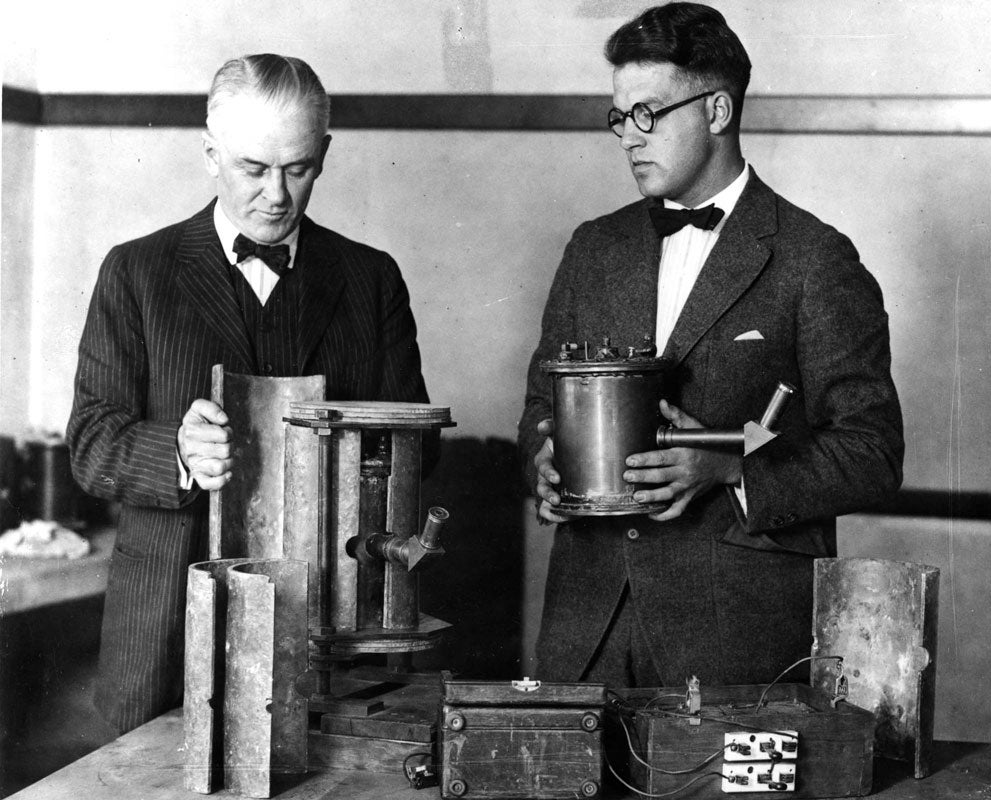
Physicists and other scientists delve into the complexities of the atom, determined to understand its structure and to gain the ability to break it apart.
Image source: Robert Millikan and G. Harvey Cameron with early cosmic ray electroscopes, lead shielding, batteries, and voltmeter. AIP Emilio Segrè Visual Archives General Collection.
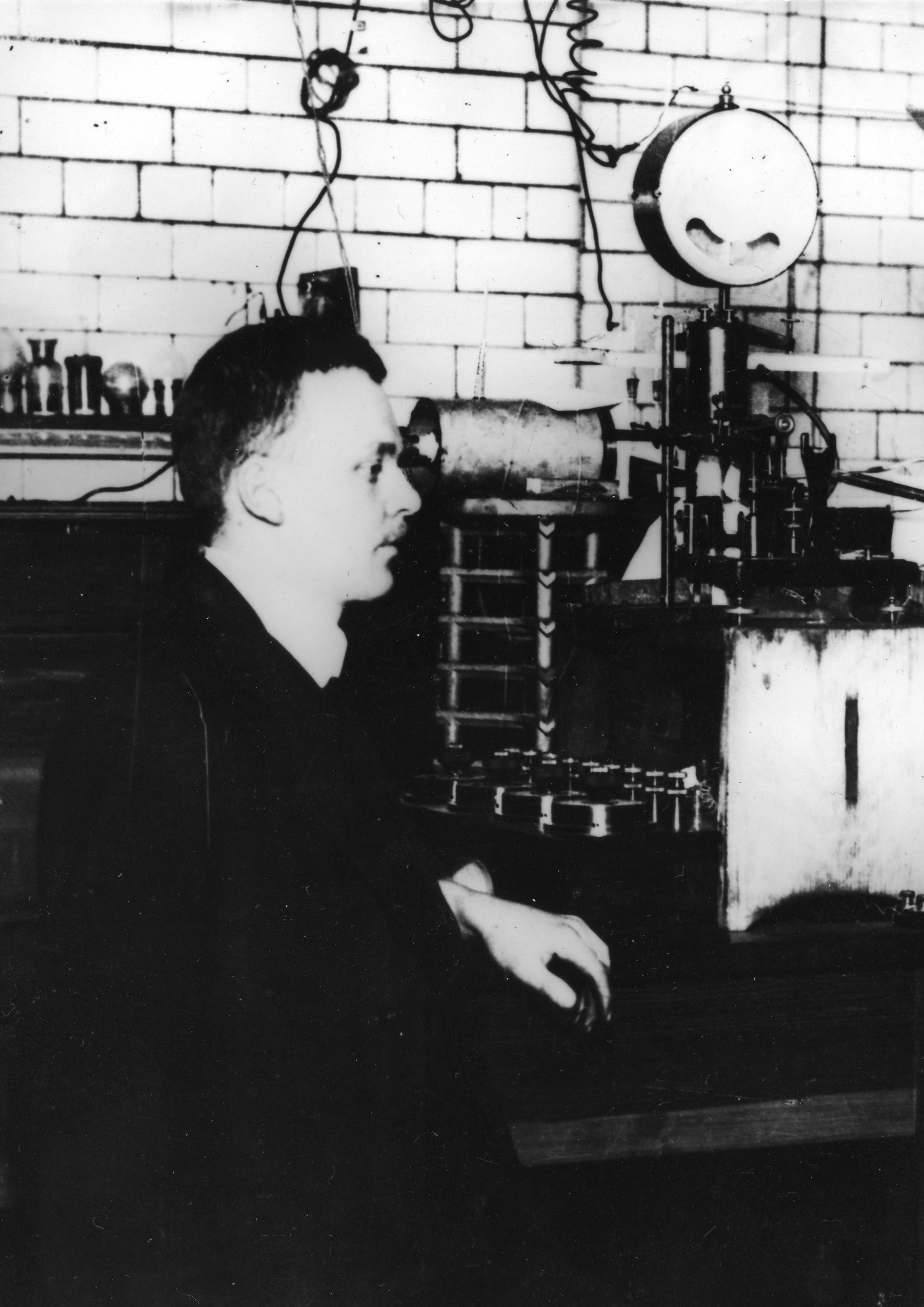
Ernest Rutherford, recently appointed chair of physics at the University of Manchester, and his student, German physicist Hans Geiger, published a description of a new device to detect radioactivity in the Proceedings of the Royal Society. Geiger continued to make improvements on the device and in 1928, with the help of his student Walther Müller, developed the Geiger-Müller counter still used today.
Image source: Geiger and Rutherford Converse. AIP Emilio Segrè Visual Archives, Physics Today Collection
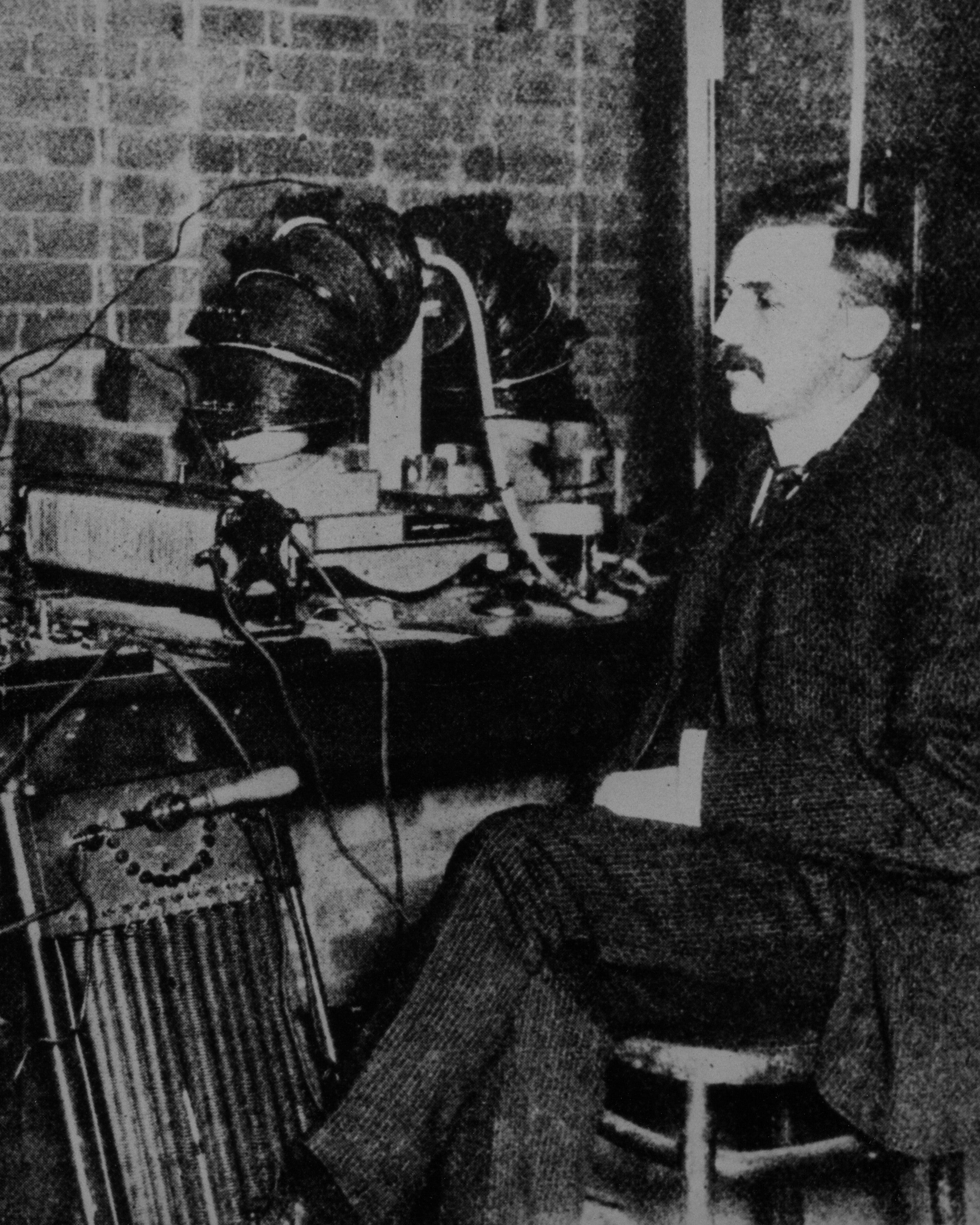
Ernest Rutherford published his discovery of the nucleus of the atom in Philosophical Magazine. While researching the scattering of alpha particles, he discovered a central charge within the atom that he later named the nucleus.
Image source: Professor Ernest Rutherford, F.R.S. in his laboratory. National Archives at College Park.
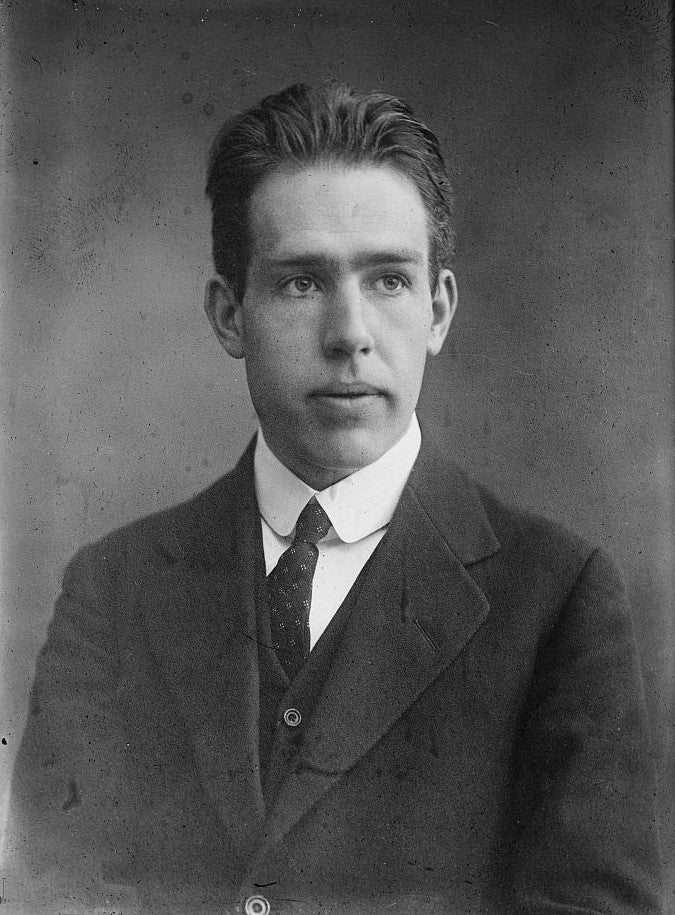
Danish physicist Niels Bohr published his first model of an atom in Philosophical Magazine. The model positioned what would later be called neutrons and protons in a central nucleus with orbiting electrons similar to planets orbiting the sun.
Image source: Bain News Service, Publisher. Prof. Bohr. George Grantham Bain Collection. Library of Congress Prints and Photographs Division.
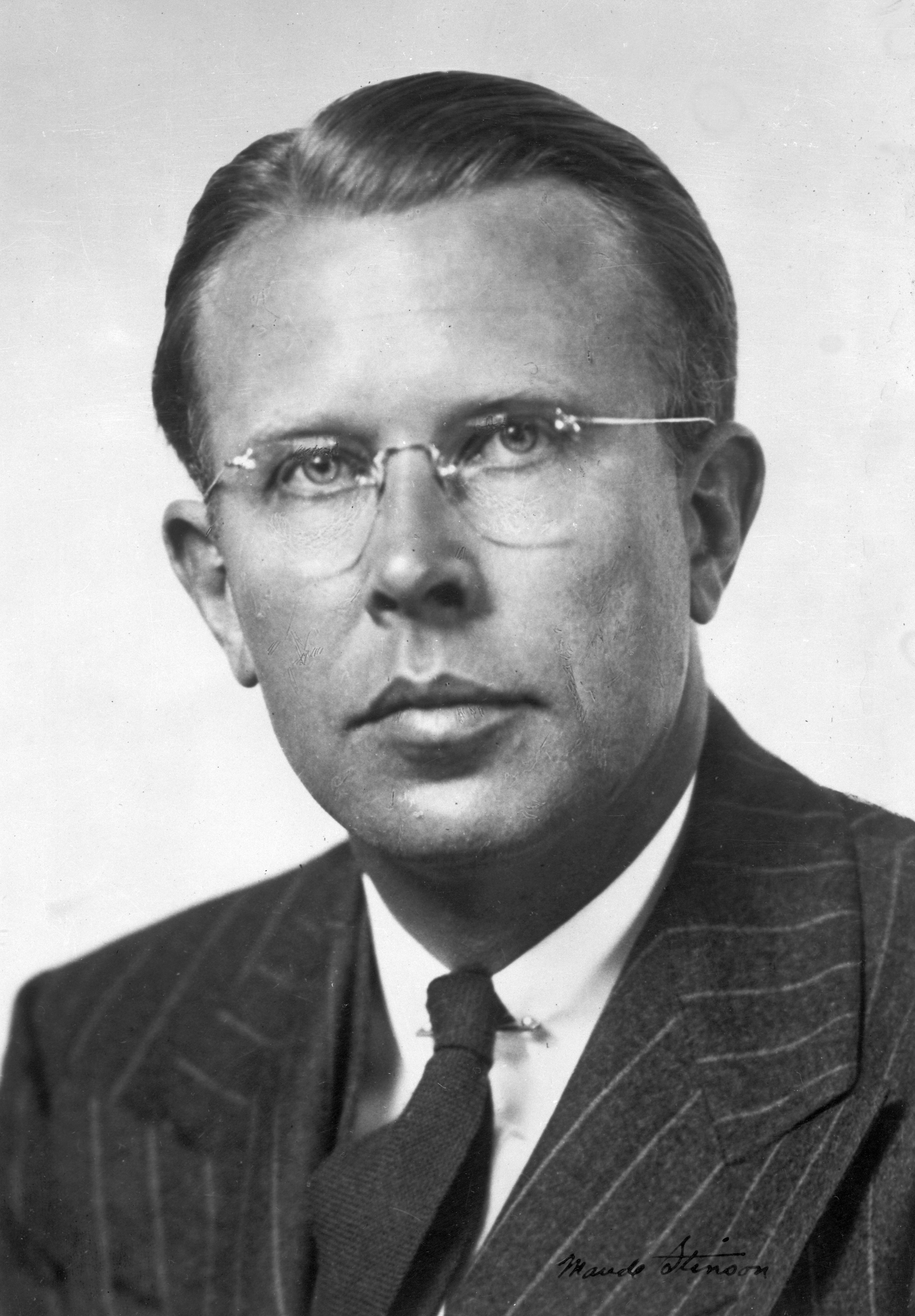
Ernest O. Lawrence published a description of the first cyclotron in a brief article in Science. The cyclotron accelerated nuclear particles to very high velocities without the use of high voltages. The first cyclotron was a pie-shaped device of glass, sealing wax and bronze.
Image source: Ernest Orlando Lawrence portrait. 1939, National Archives at College Park.
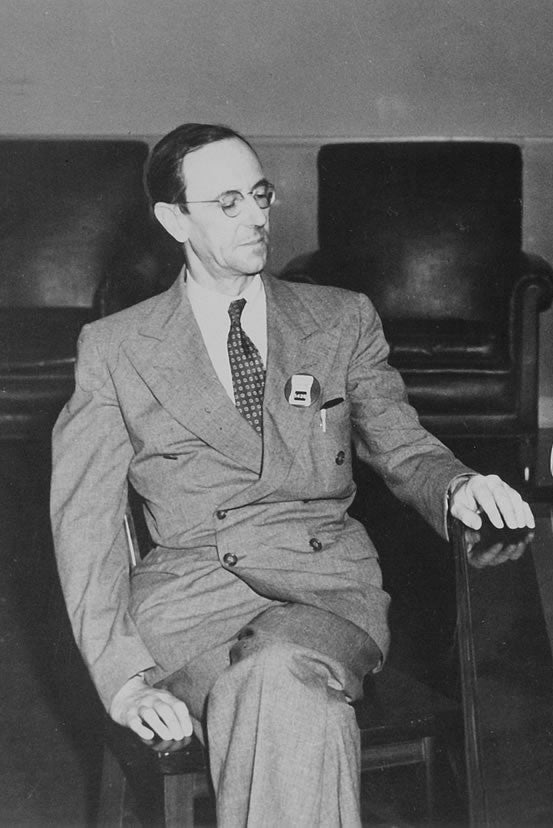
James Chadwick announced his discovery of the neutron in a brief article in Nature and a subsequent complete paper in the Proceedings of the Royal Society. Chadwick found that neutrons lacked an electrical charge and that they would be able to penetrate matter.
Image source: Groves and Chadwick. History Photo Album. Los Alamos National Laboratory.
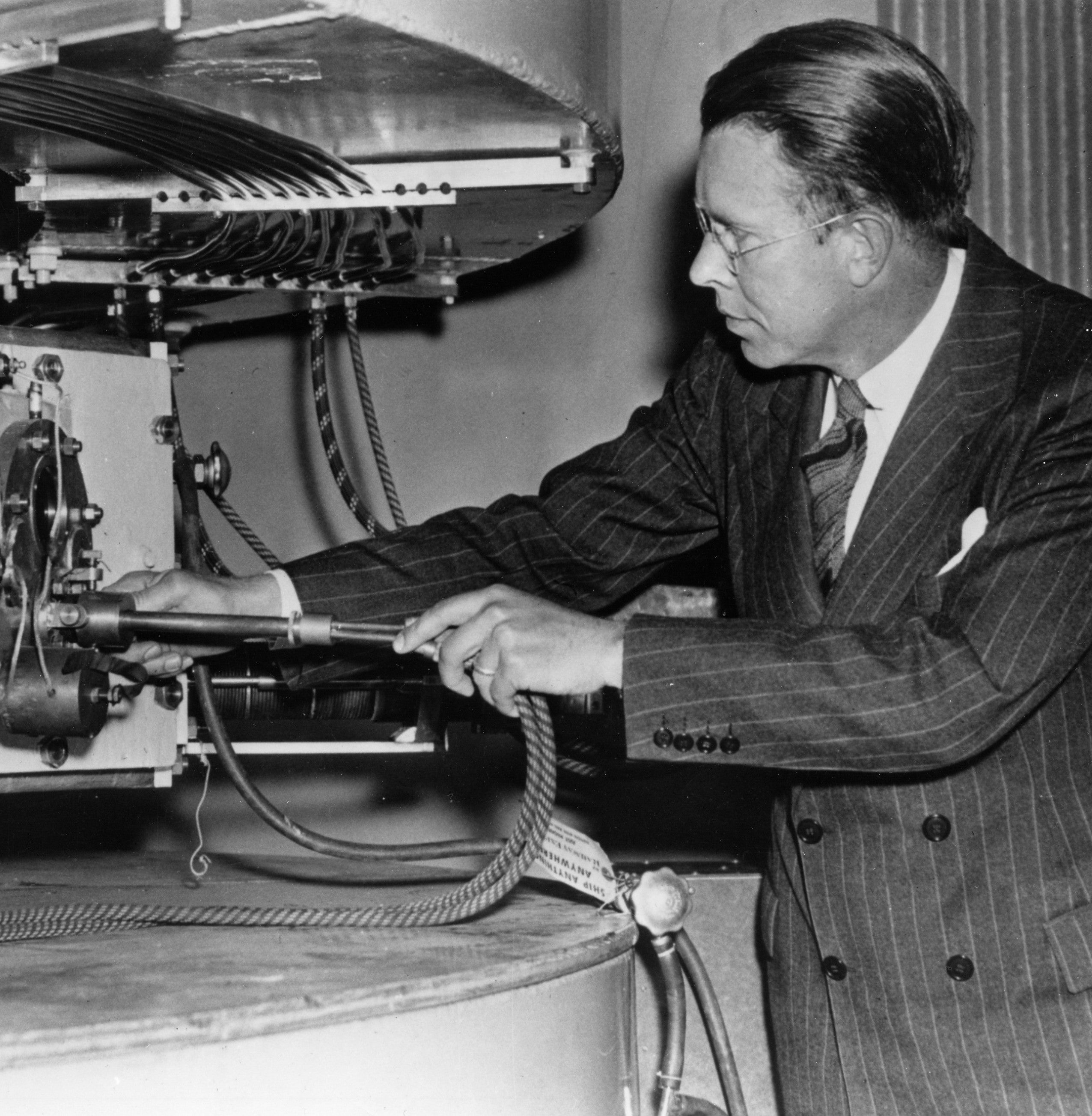
With fascism on the rise in Europe, an exodus of Jewish scientists occurs. The ability to generate energy from atoms is discovered.
Image source: Ernest Lawrence Working. Lawrence Berkeley National Laboratory, AIP Emilio Segrè Visual Archives General Collection.
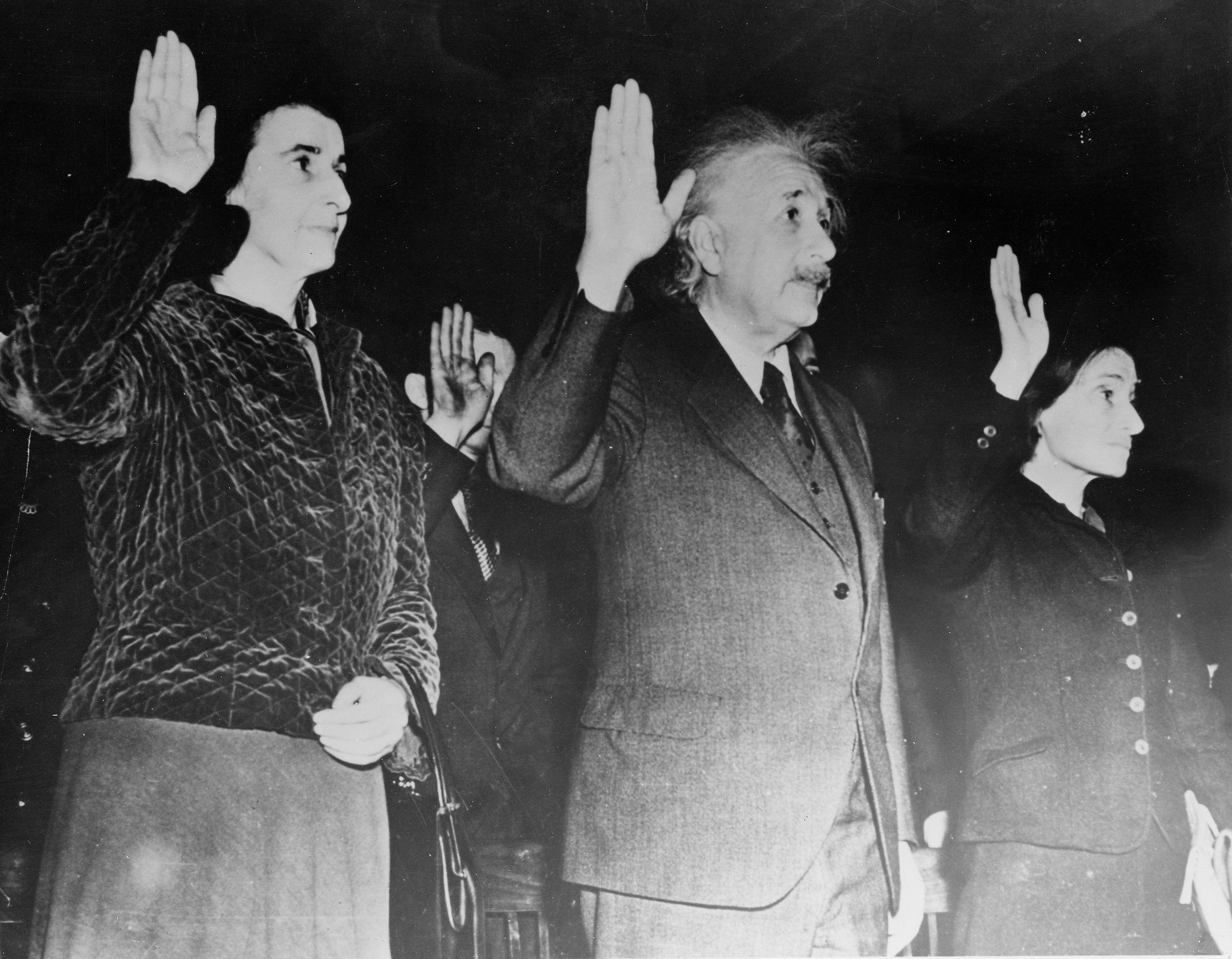
On the morning of January 30, in German President Paul von Hindenburg’s office, Adolf Hitler was sworn in as Chancellor. Hindenburg died in August 1934 and Hitler seized total control of the government. Over the next several years many Jewish scientists fled Germany and other European countries in the wake of state-sponsored anti-Semitism.
Image source: Einstein taking U.S. Oath of Allegiance. Argonne National Laboratory, AIP Emilio Segrè Visual Archives General Collection.
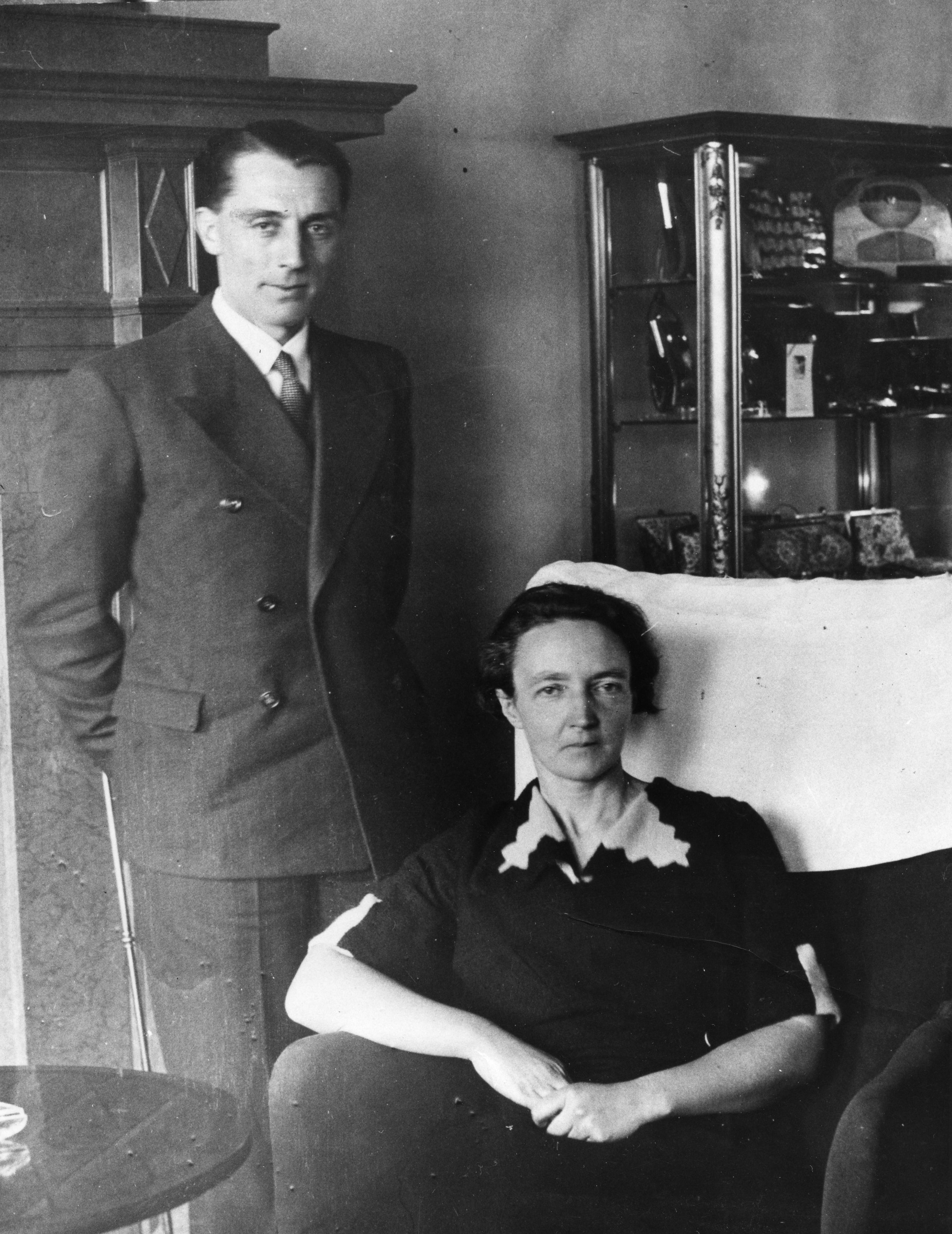
French scientists Frédéric and Irène Joliot-Curie, daughter of Marie Curie, published their discovery of artificial radioactivity in Comptes Rendus de l'Académie des Sciences. The husband and wife team bombarded boron, aluminium, and magnesium to produce isotopes of these elements not found naturally. This discovery led to the production of cheap and plentiful radioactive materials for medical purposes.
Image source: Portrait of Frederic and Irene Joliot-Curie. AIP Emilio Segrè Visual Archives, Physics Today Collection.
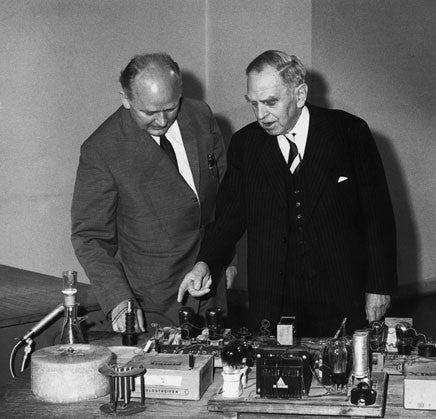
Otto Hahn and Fritz Strassmann, chemists at the Kaiser Wilhelm Institute of Chemistry in Berlin, reported in Naturwissenschaften that they had unexpectedly detected the element barium after bombarding uranium with neutrons. The presence of barium, a lighter element that uranium, suggested the splitting of the uranium nucleus.
Image source: Otto Hahn Repeats his Nuclear Fission Experiment of December 1938. 1962, German History in Documents and Images, German Historical Institute.
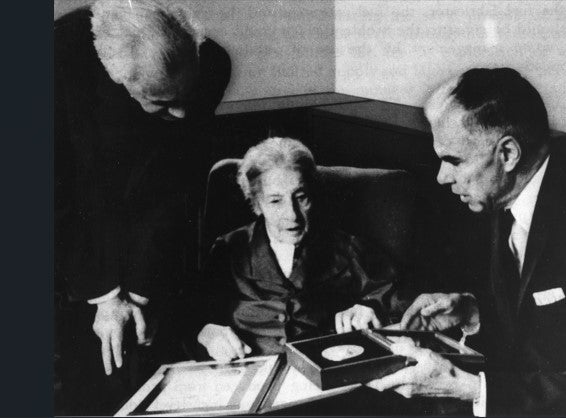
Lise Meitner and her nephew Otto Frisch published a theoretical interpretation of the Hahn-Strassmann results in Nature. In the article they introduced the term “fission” to describe the splitting of a nucleus to produce energy in a nuclear chain reaction.
Image source: Award for Lise Meitner. 012 Historical Photo Album, IAEA Imagebank, International Atomic Energy Agency.
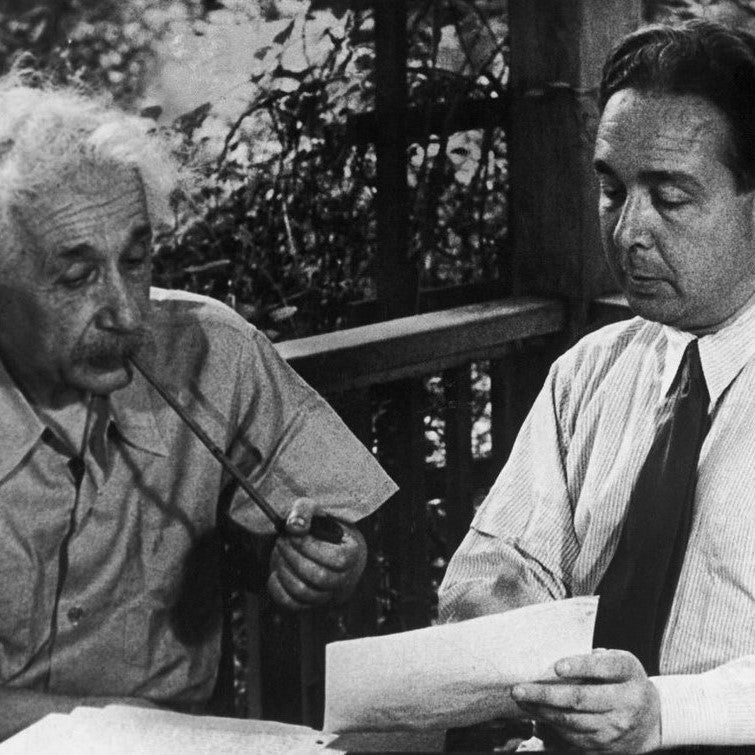
Economist Alexander Sachs, a friend of President Franklin D. Roosevelt, hand delivered a letter to FDR written by Albert Einstein, living in Long Island, New York, with help from Hungarian émigré physicist Leo Szilard. Einstein advised the President that recent research into fission revealed it was possible to produce a nuclear chain reaction with a bomb, Germany was most likely working on it, and that the United States should actively support this research.
Image source: Einstein-Szilard. 1939, 70th Anniversary Photo Album, Los Alamos National Laboratory.
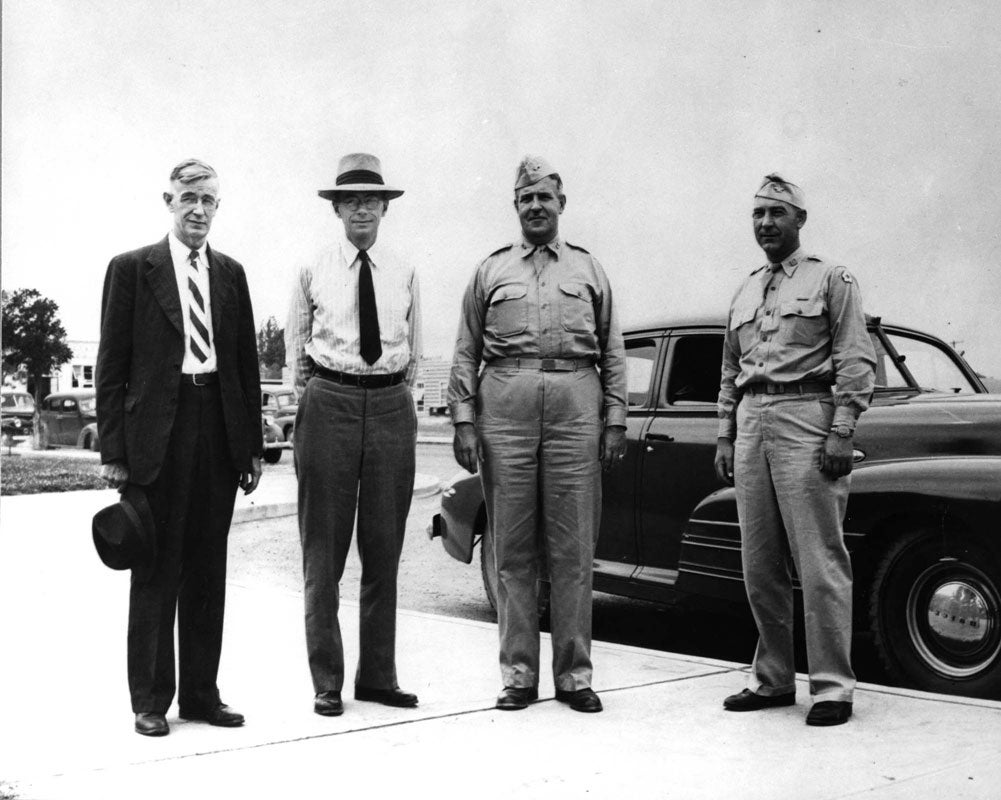
The work of physicists begins to focus on the essential components for building an atom bomb. The U.S. government brings organizational structure and financial support to the undertaking.
Image source: Visitors to Hanford Engineering Works. 1958, Hagley Museum and Library.
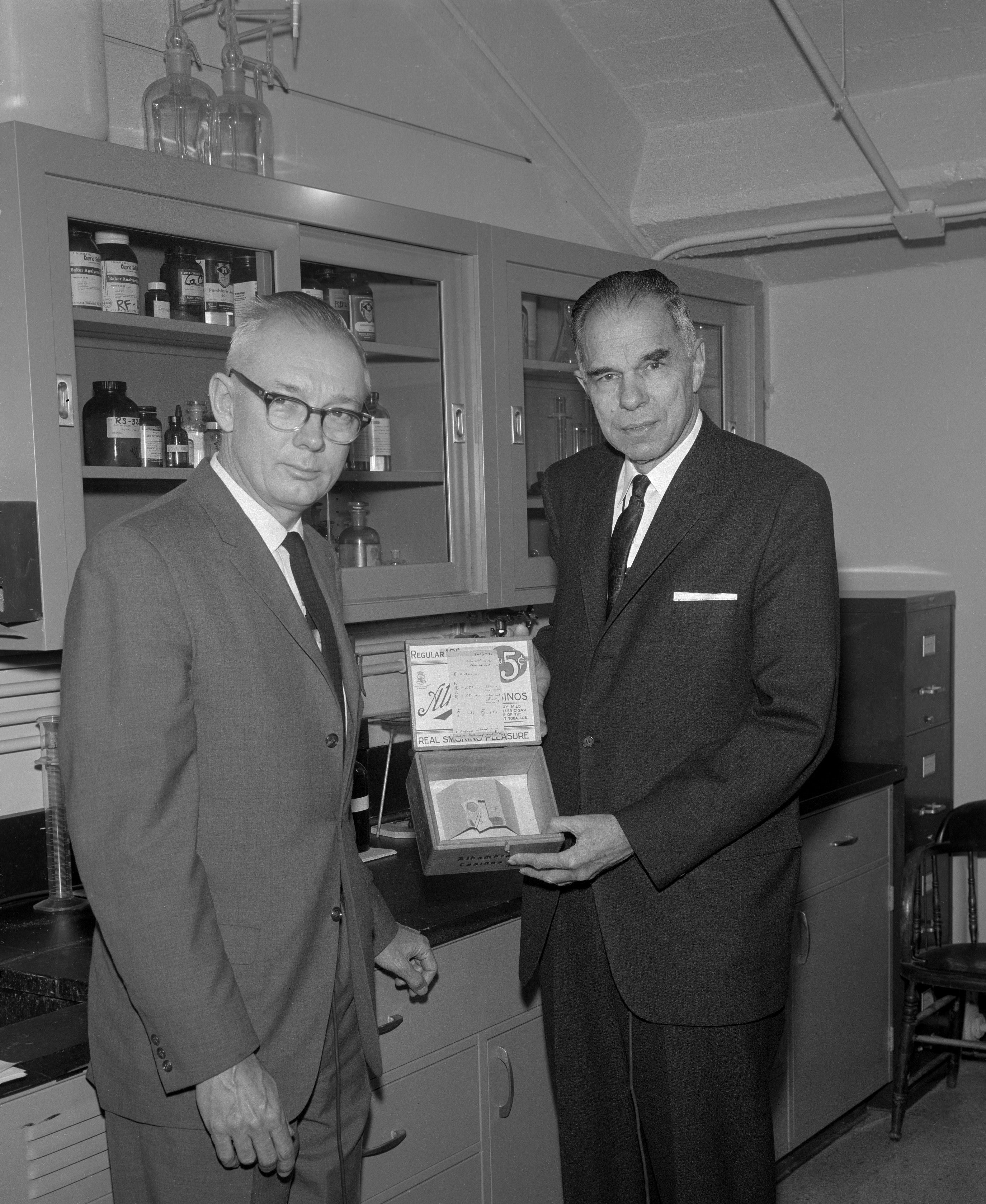
Glenn Seaborg, a physicist at the University of California, Berkeley, along with chemist Joseph Kennedy and graduate student Arthur Wahl, discovered element 94 that Seaborg named “plutonium” after the planet. The scientists discovered the new element by bombarding uranium with deuterons, the nuclei of the hydrogen isotope deuterium. Seaborg submitted a paper to Physical Review announcing this discovery, but because of an agreement not to publish research results during the war, the journal did not publish the paper until 1946.
Image source: Arthur C. Wahl and Glenn T. 1966, National Archives at College Park.
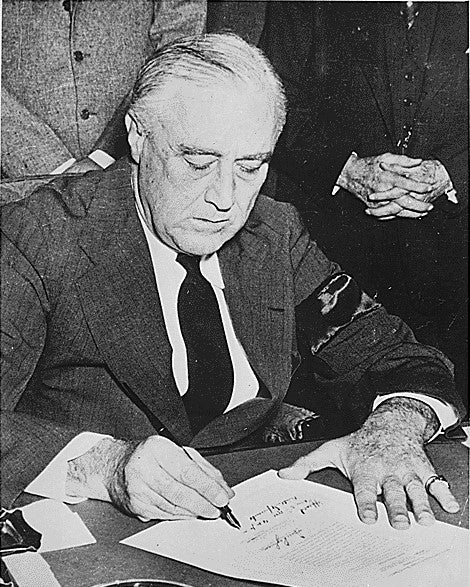
President Franklin D. Roosevelt authorized the Manhattan Engineering District (later called the Manhattan Project) with a $2 billion appropriation to build an atomic bomb. The next day planes from the Japanese naval planes bombed U.S. military installations at Pearl Harbor, Hawaii, followed hours later by attacks on Midway and Wake islands, Guam, Hong Kong, Malaysia, Thailand, the Philippines, and Shanghai, China.
Image source: President Franklin D. Roosevelt Signing the Declaration of War Against Japan. 1941, National Archives at College Park.
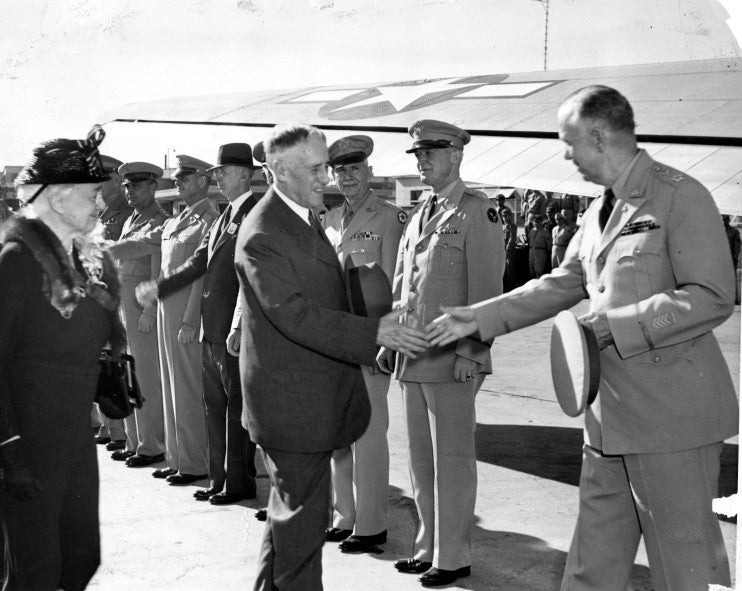
Secretary of War Henry Stimson promoted Colonel Leslie Groves, an army engineer, to Brigadier-General and placed him in charge of the Manhattan Project. Groves recruited J. Robert Oppenheimer, a theoretical physicist working at Ernest Lawrence’s Radiation Laboratory in Berkeley, California, as the project’s scientific director.
Image source: Secretary Henry L. Stimson. 1945, Harry S. Truman Library.
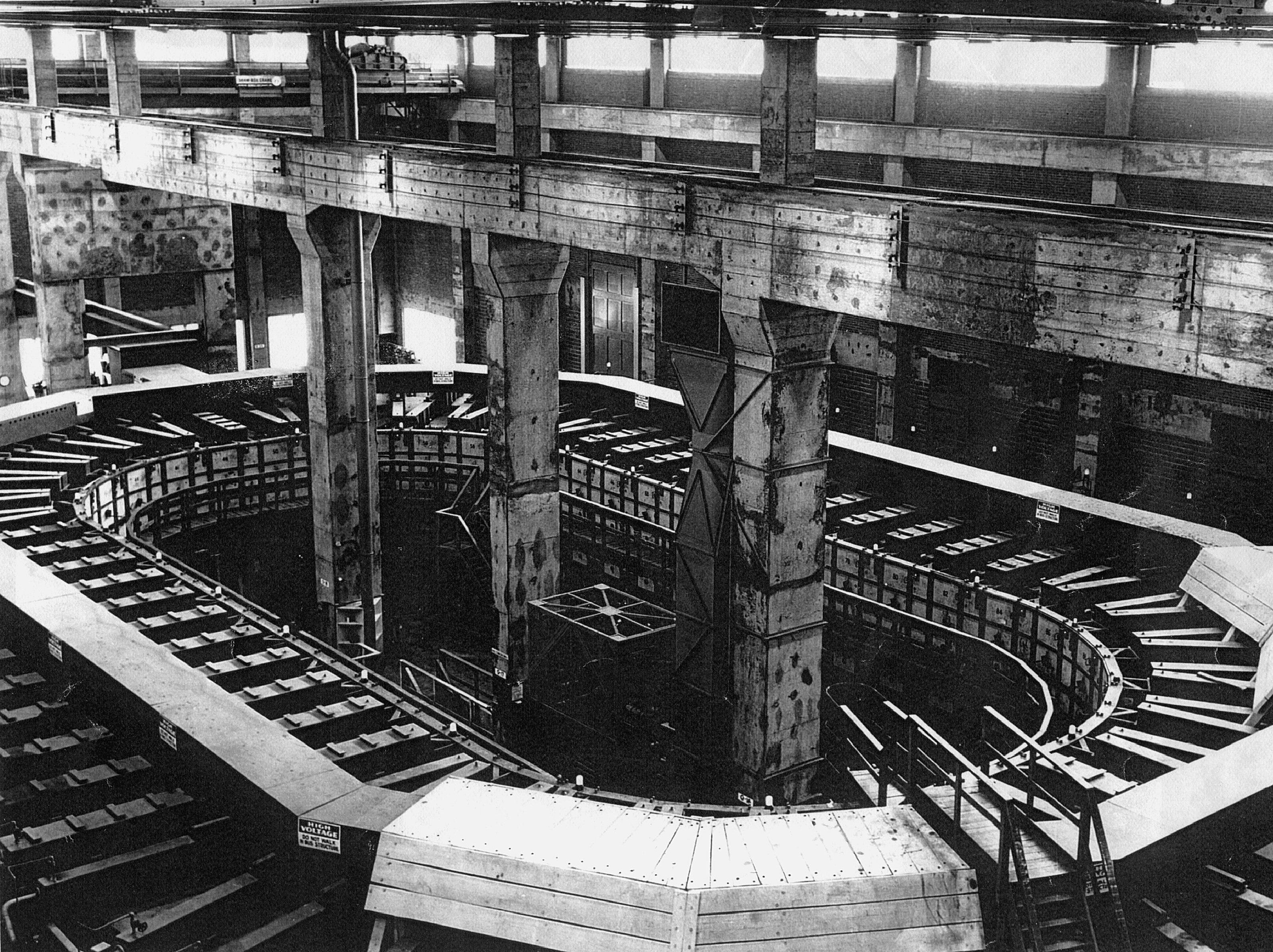
The Army Corps of Engineers began construction at the Clinton Engineer Works in Oak Ridge, Tennessee, for an uranium isotope separation plant. The Y-12 Plant, one of three enrichment facilities at Oak Ridge, utilized calutrons to separate electromagnetically uranium isotopes in order to produce weapons-grade material for the Manhattan Project.
Image source: Y-12 Alpha Racetrack. The Manhattan Project Photo Album, U.S. Department of Energy.
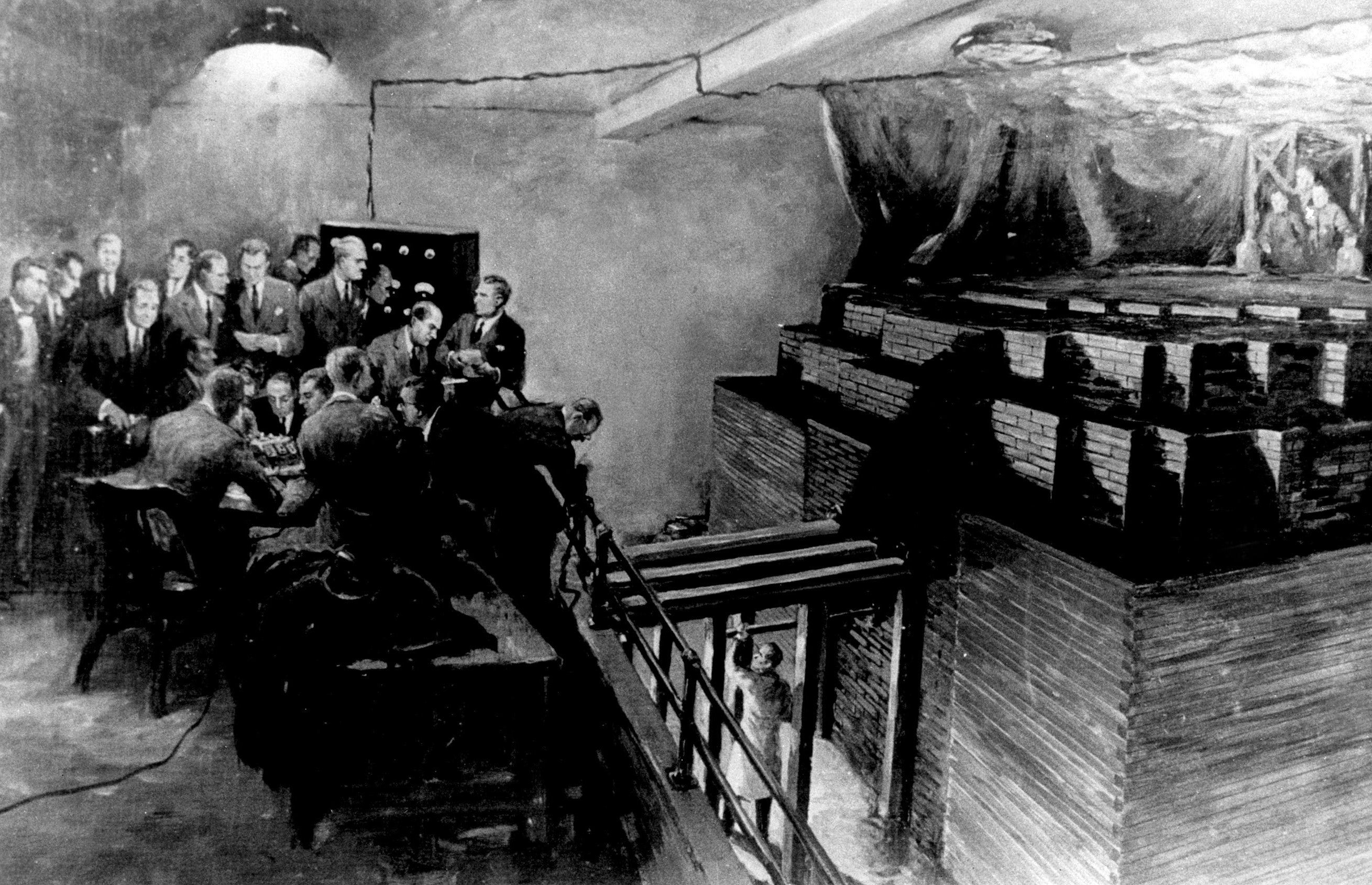
Enrico Fermi, head of the University of Chicago’s Metallurgy Laboratory, and colleagues produced the world’s first self-sustained nuclear chain reaction in a reactor named Chicago Pile-1. Fermi conducted the test under the west stands of the university’s 50,000 seat football stadium. Using a coded message Arthur Compton telephoned James Conant with news of the event: “the Italian navigator has reached the New World.”
Image source: Photograph of an original painting by Gary Sheehan. Depicted is his version of the scene when scientist(s) observed the world's first nuclear reactor (CP-1). 1957, National Archives at College Park.
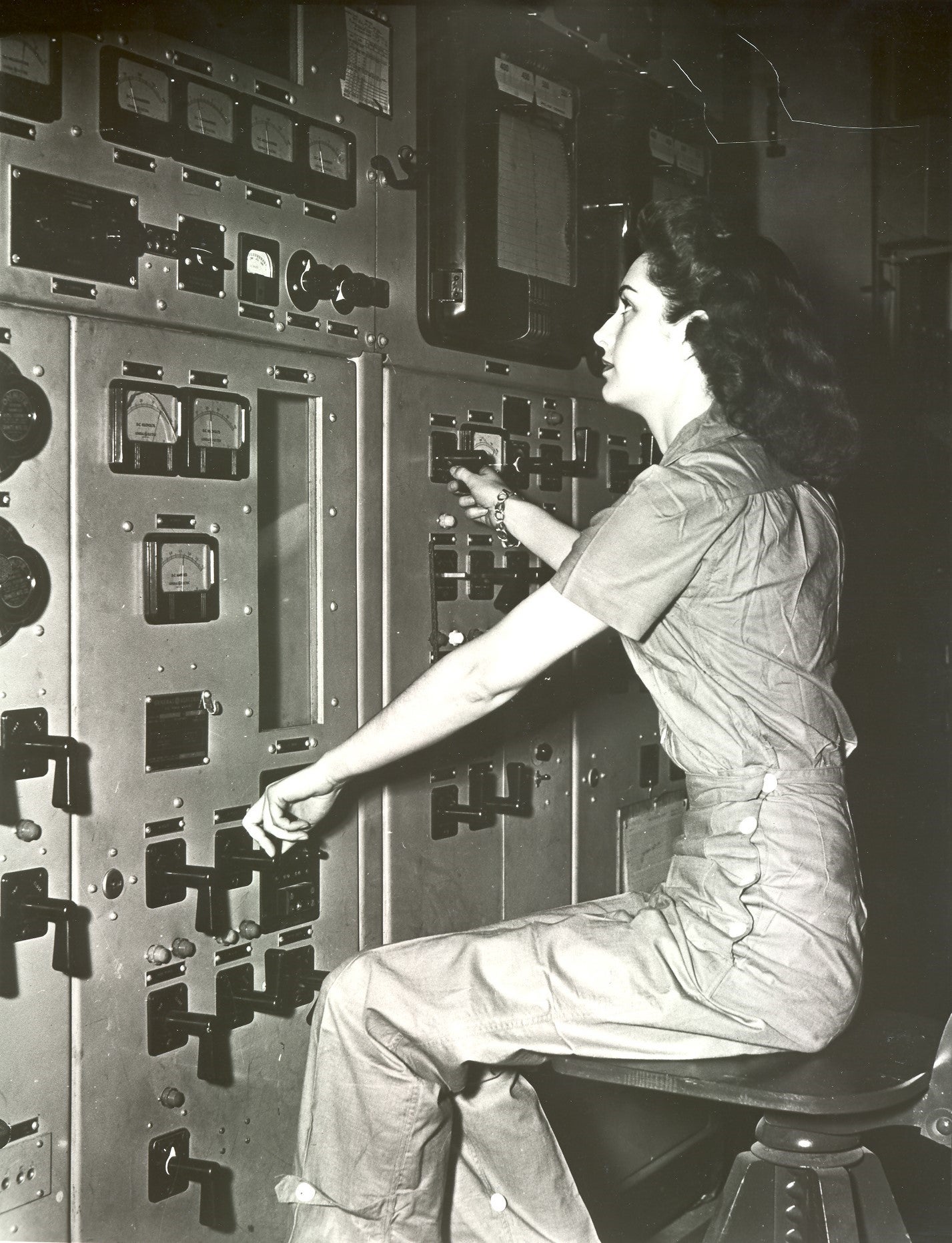
Hidden in remote cities and factories across the United States, scientists and ordinary citizens work in secrecy to produce the hardware and fissionable material to build an atomic bomb.
Image source: Westcott, Ed. A Calutron Girl at Y-12. The Manhattan Project Photo Album, U.S. Department of Energy.
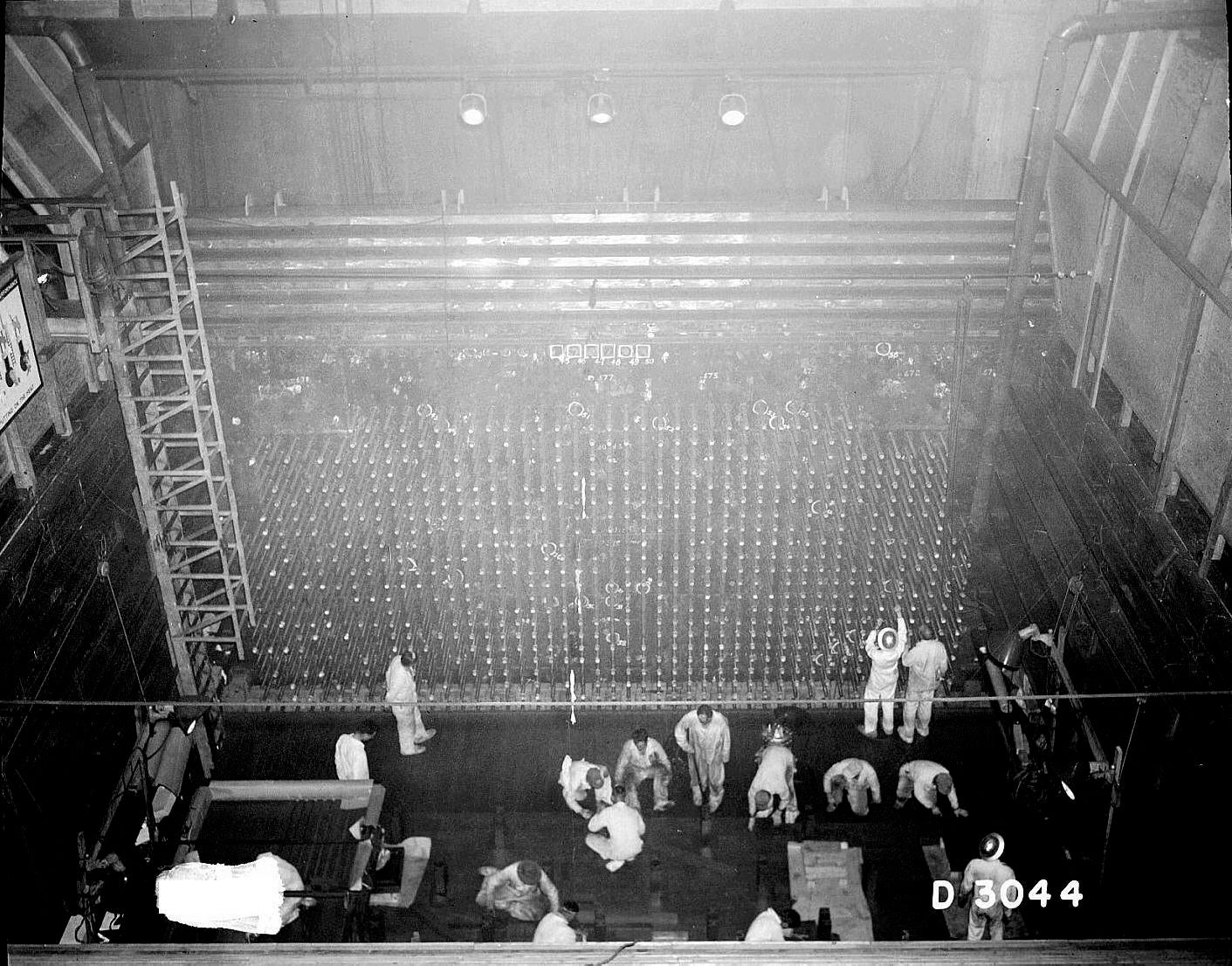
Construction began along the Columbia River at Hanford, Washington, to build a facility to produce plutonium for an atomic bomb. General Groves chose the DuPont Company as the prime construction contractor. DuPont officials selected Hanford because of its great distance from the uranium production facility at Oak Ridge, Tennessee and its proximity to a major water source.
Image source: B-Reactor Hanford. The Manhattan Project Photo Album, U.S. Department of Energy.
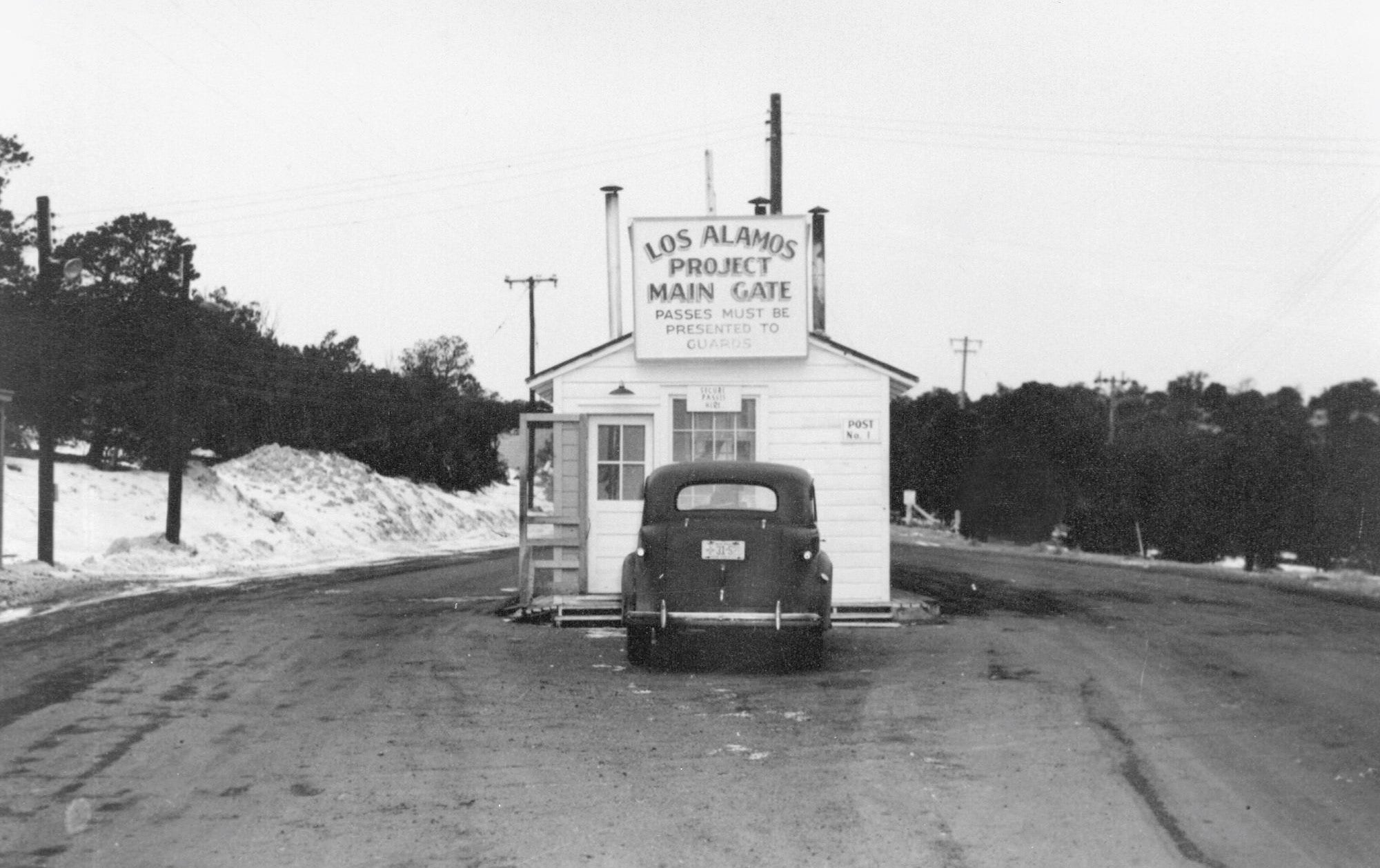
J. Robert Oppenheimer arrived at the new atomic research laboratory at Los Alamos, New Mexico. Los Alamos satisfied two key requirements for the secret project: safety from bombing by enemy aircraft and safety from curious citizens.
Image source: Los Alamos Project Main Gate. The Manhattan Project Photo Album, U.S. Department of Energy.
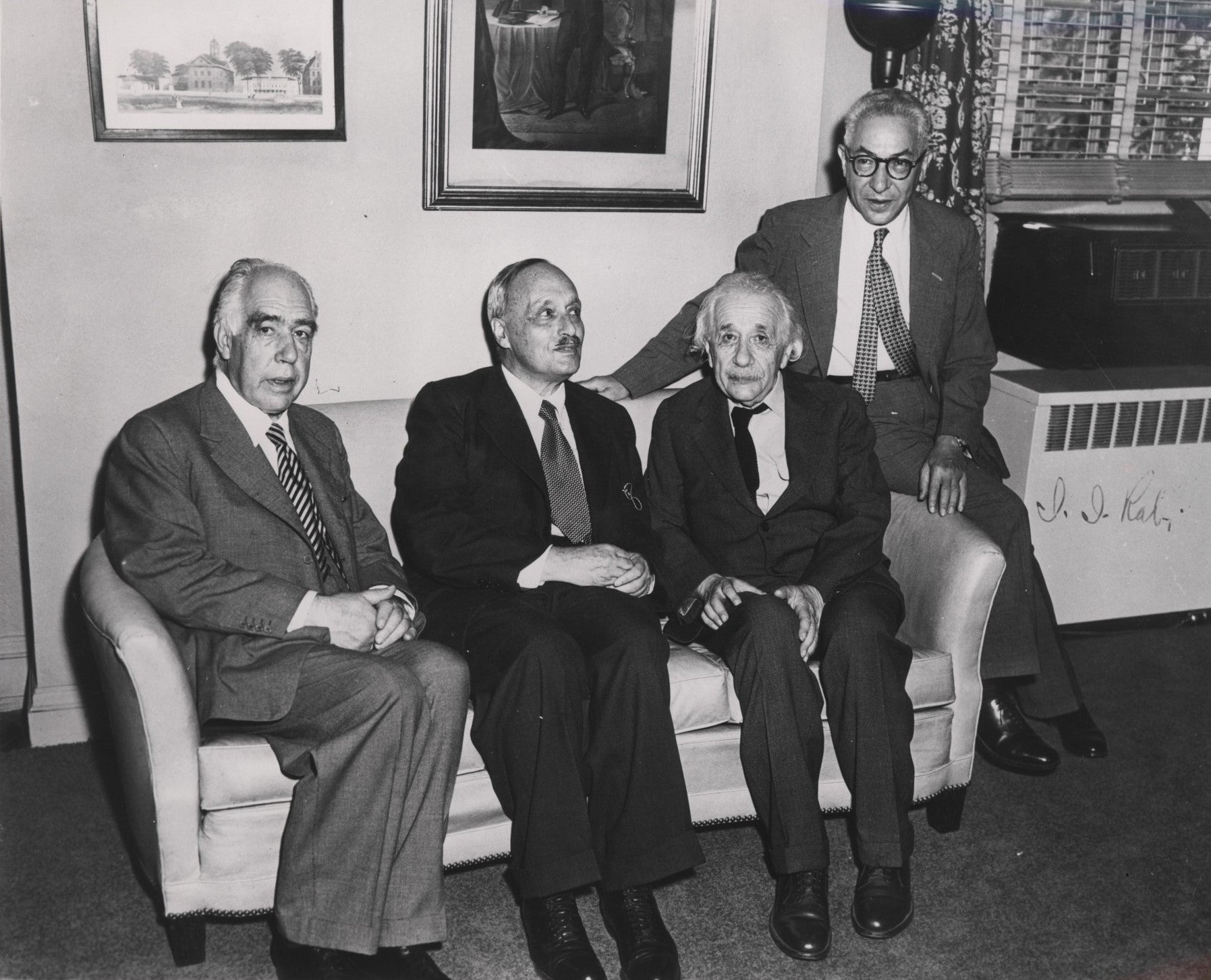
Prominent scientists involved in the Manhattan Project delivered “A Report of the Committee on Political and Social Problems from the Manhattan Project’s Metallurgical Laboratory at the University of Chicago” to Secretary of War Henry Stimson. The Franck Report, named after the committee chairman James Franck and signed by fellow scientists Donald Hughes, J. J. Nickson, Eugene Rabinowitch, Glenn Seaborg, J. C. Stearns, and Leo Szilard, urged the Truman administration to use an atomic bomb demonstration with the Japanese in a remote area instead of against a civilian population.
Image source: Portrait of Albert Einstein and Others from Scientific Identity. Dibner Library of the History of Science and Technology, Smithsonian Libraries.
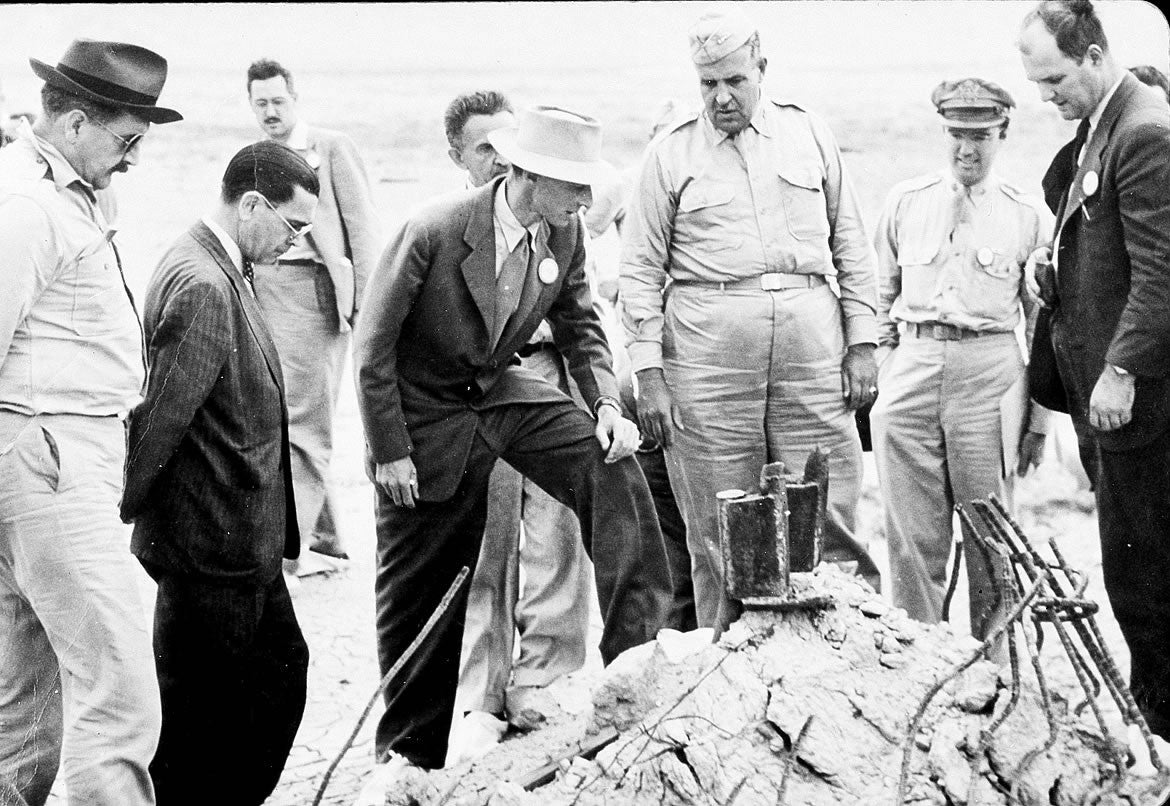
Manhattan Project scientists exploded the world’s first atomic bomb one hundred feet over an area of New Mexico desert known as the Jornada del Muerto, the Journey of the Dead Man. After witnessing the explosion, physicist Kenneth Bainbridge, the Trinity Test Director, said to Oppenheimer, “now we are all sons of bitches.”
Image source: Groves and Oppenheimer. 1945, History Photo Album, Los Alamos National Laboratory.
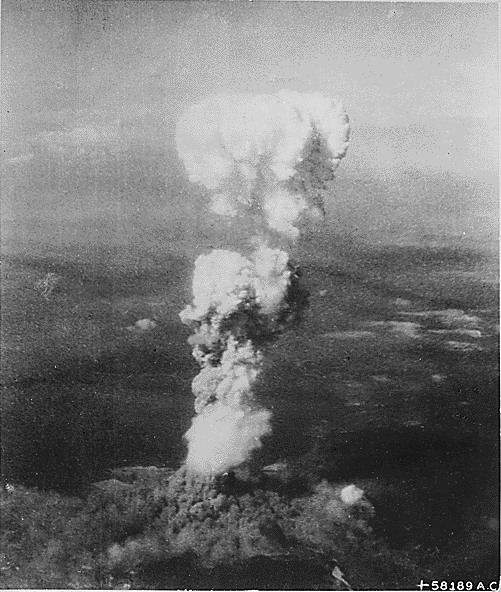
The United States Army Air Force dropped an atomic bomb on Hiroshima, Japan. The bomb, named “Little Boy,” used uranium-235 processed at Oak Ridge for its implosion assembly. This was followed three days later with a second atomic bomb, “Fat Man,” dropped on Nagasaki. World War II officially ended on September 2 with the formal surrender ceremony in Tokyo Harbor.
Image source: At the time this photo was made, smoke billowed 20,000 feet above Hiroshima while smoke from the burst of the first atomic bomb had spread over 10,000 feet on the target at the base of the rising column... 1945, National Archives at College Park.
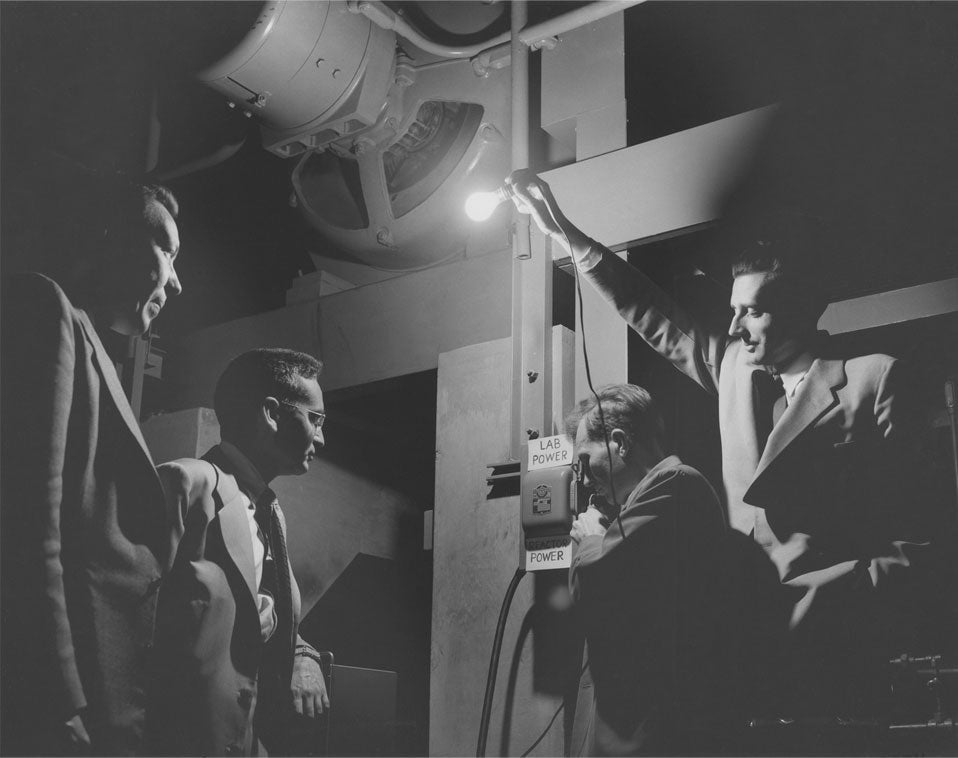
With the world no longer at war, nuclear research moves out of military control into civilian management. Nuclear weapons testing proliferates at the same time as developments are made in medical applications and the generation of atomic energy.
Image source: Westcott, Ed. First nuclear-generated electricity to the grid. 1952, ORNL History Photo Album, Oak Ridge National Laboratory.
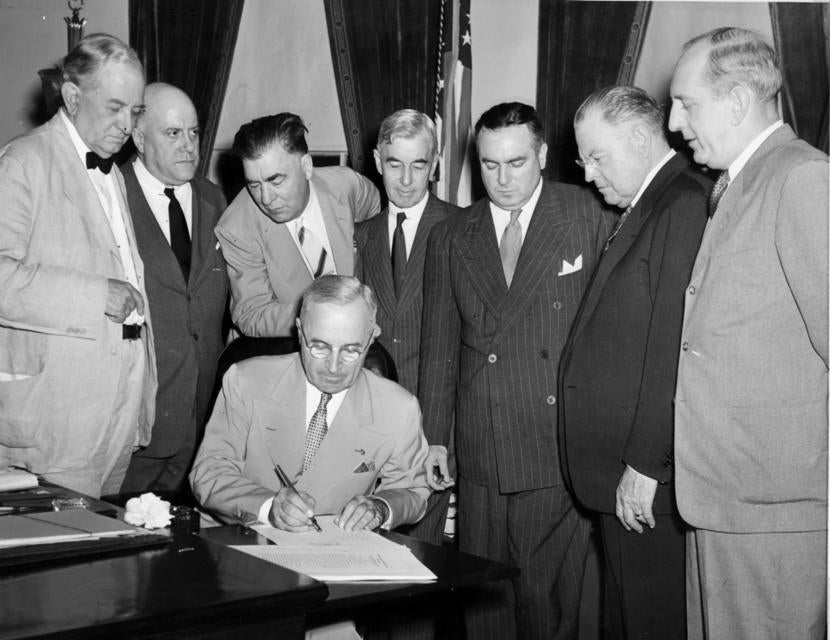
President Harry S. Truman signed the Atomic Energy Act into law. The Act transferred nuclear research and development from the Army to civilian control under the Atomic Energy Commission. The nuclear research and production facilities of the Manhattan Project transferred to the AEC on January 1, 1947.
Image source: President Truman signs atomic energy bill. 1946, Harry S. Truman Library.
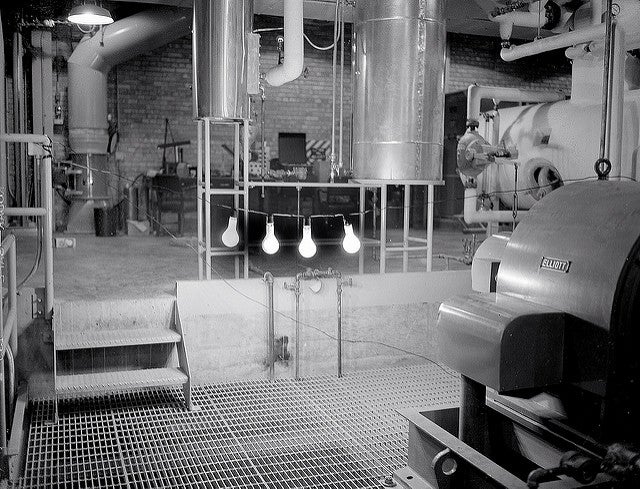
An experimental reactor near Arco, Idaho, produced the first electricity from nuclear energy. The reactor, designed and built at Argonne National Laboratory and known as Experimental Breeder Reactor I, generated enough electricity to light four light bulbs.
Image source: First electricity from nuclear power. 1951, History Photo Album, Argonne National Laboratory.
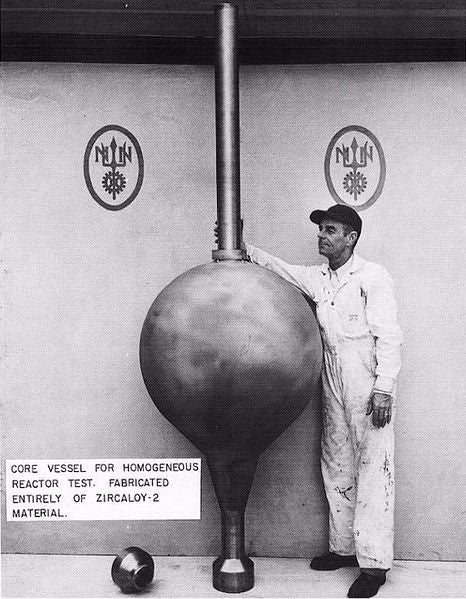
Scientists at Oak Ridge National Laboratory successfully operated an experimental homogeneous reactor to generate one megawatt of power.
Image source: The First 50 Years. Oak Ridge National Laboratory Review. Vol. 25, no. 3 and 4, 1992, pp. 117.
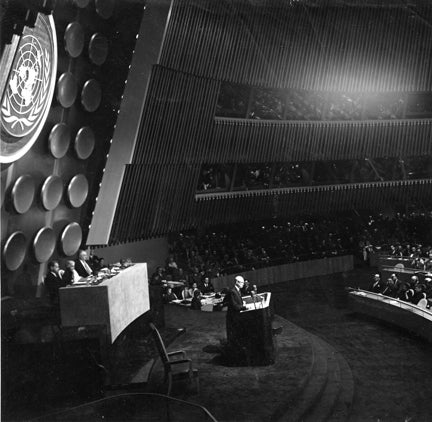
President Dwight D. Eisenhower delivered his “Atoms for Peace” speech before the United Nations General Assembly. Eisenhower proposed an international agency to promote peaceful applications of nuclear energy and the loan of enriched uranium for peaceful applications to non-nuclear countries.
Image source: Dwight D. Eisenhower delivering his Atoms for Peace speech before the U.N. General Assembly. 1953, Dwight D. Eisenhower Presidential Library.
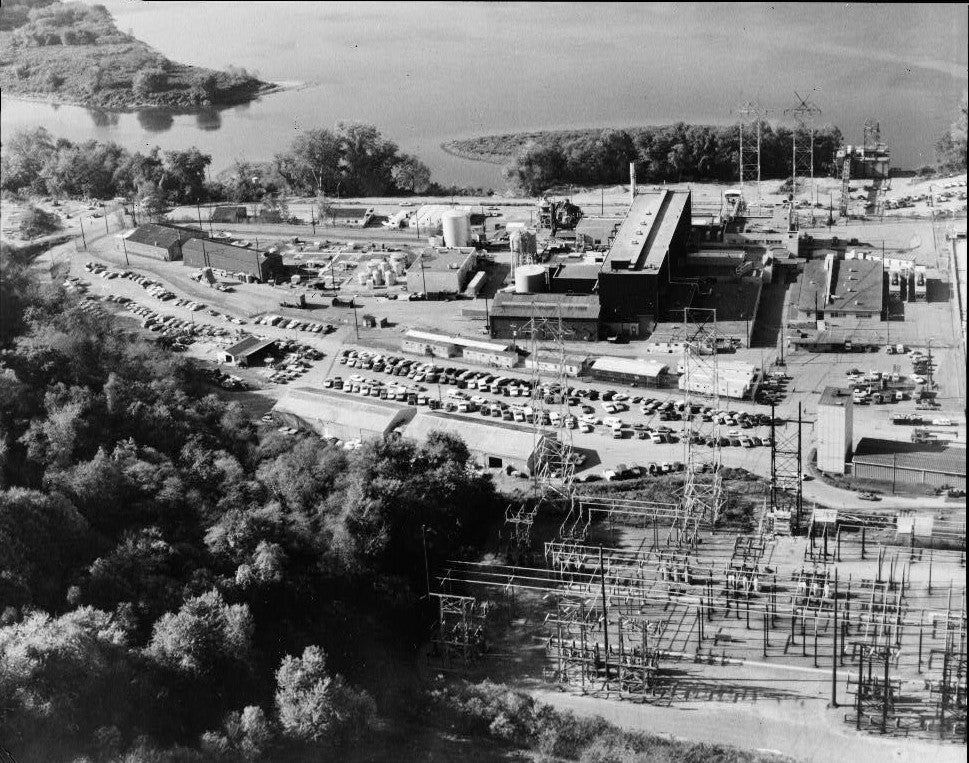
The first large-scale commercial nuclear power plant in the U.S. went online in Shippingport, Pennsylvania, 25 miles northwest of Pittsburgh. The plant utilized a pressurized light water reactor originally designed for the navy’s first nuclear submarines.
Image source: Historic American Engineering Record, Creator, et al., photographers by Prehl, Dick, Dave Vandeveer, and Jack Lever. Shippingport Atomic Power Station, On Ohio River, 25 miles Northwest of Pittsburgh, Shippingport, Beaver County, PA. Library of Congress.
